
TINE CURK GROUP

Contact:
Northwestern University
Dept. of Mat. Sci. & Eng.
2220 Campus Drive, Cook 2036
Evanston, IL 60208
email: [surname][at]northwestern.edu
Google scholar
Welcome!
I am currently a Marie Curie postdoctoral fellow at Northwestern University, working in the group of
Prof. Erik Luijten and collaborating with the group of
Prof. Samuel I. Stupp.
Education:
- Ph.D. in Theoretical Chemistry (2016),
University of Cambridge, UK.
Advisor: Prof. Daan Frenkel - B.Sc. and M.Sc. in Physics (2012),
University of Maribor, Slovenia.
Charge regulation in molecules, polyelectrolytes and nanoparticles
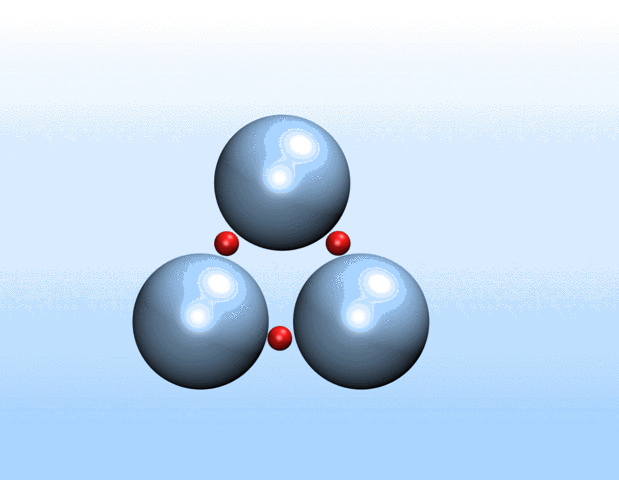
Nanoparticles, polyelectrolytes and biomolecules in solution acquire charge through the dissociation or association of surface groups. Thus, a proper description of their electrostatic interactions requires sampling of protonation states and the use of charge-regulating boundary conditions rather than the commonly employed constant-charge approximation. Charge regulation effects can qualitatively change structures due to global charge redistribution, stabilizing asymmetric constructs. We provide an open-source implementation of the charge-regulation solver for the LAMMPS molecular dynamics package.
T. Curk and E. Luijten
Phys. Rev. Lett. 126, 38003 (2021) [Editor’s Suggestion]
T. Curk, J. Yuan and E. Luijten
J. Chem. Phys (under review) [preprint]
Optimal packing of polymers (DNA) in viral capsids.
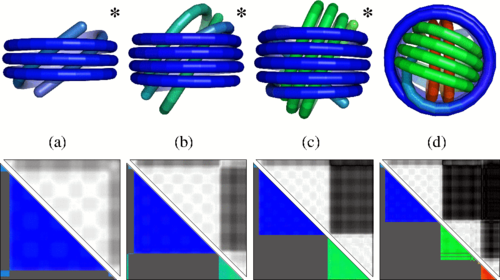
Although the free energy of a genome packing into a virus is dominated by DNA-DNA interactions, ordering of the DNA inside the capsid is elasticity driven, suggesting general solutions with DNA organized into spool-like domains. Using analytical calculations and computer simulations of a long elastic filament confined to a spherical container, we show that the ground state is not a single spool as assumed hitherto, but an ordering mosaic of multiple homogeneously ordered domains. At low densities, we observe concentric spools, while at higher densities, other morphologies emerge, which resemble topological links.
T. Curk*, J. D. Farrell*, J. Dobnikar, R. Podgornik
Phys. Rev. Lett. 123, 047801 (2019)
Designing superselective targeting in multivalent polymers
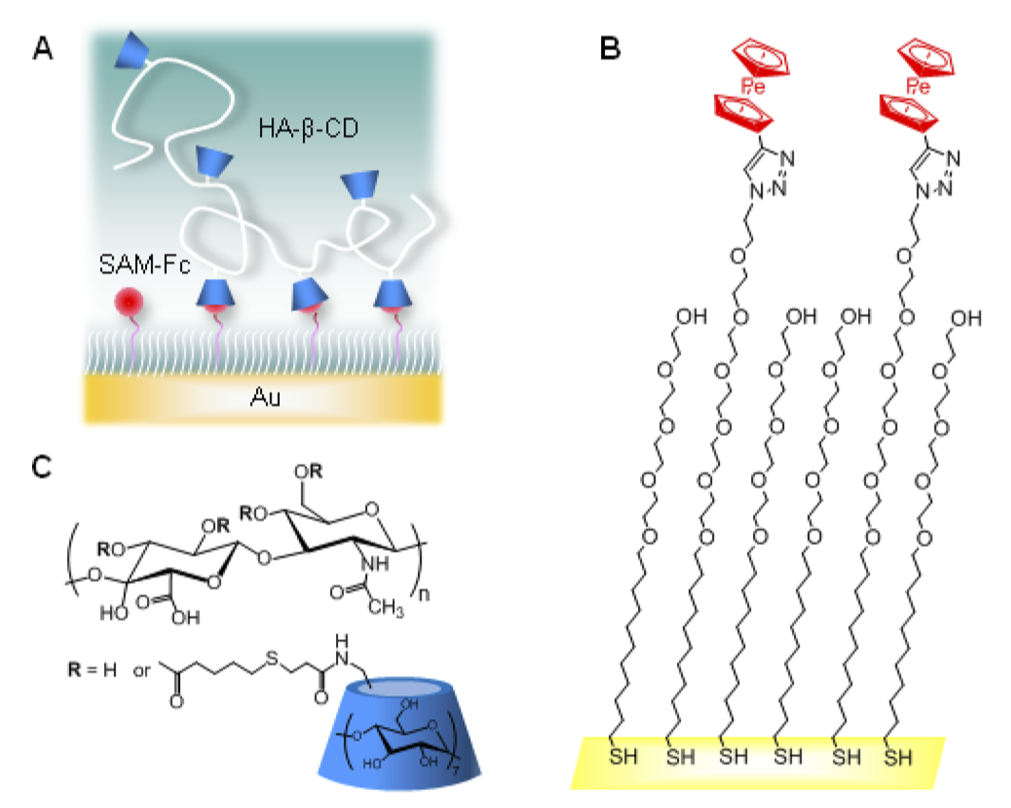
We rationalized design rules for super-selective targeting using multivalent polymers, in collaboration with Dr. Galina Dubacheva at ENS Paris-Saclay and Prof. Ralf Richter at Leeds. We have also improved the sequence design of nucleotide probes for pathogen genome detection in collaboration with Prof. Rosalind J. Allen at Edinburgh
T. Curk, et al, and Rosalind J. Allen
Proc. Nat. Acad. Sci. 117, 8719 (2020)
G. V. Dubacheva*, T. Curk*, D. Frenkel, and R. P. Richter
J. Am. Chem. Soc. 141, 2577 (2019)
G. V. Dubacheva, T. Curk, R. Auzly-Velty, D. Frenkel, and R. P. Richter
Proc. Natl. Acad. Sci. U.S.A. 112, 5579–5584 (2015)
G. V. Dubacheva, T. Curk, B. M. Mognetti, R. Auzly-Velty, D. Frenkel, and R. P. Richter
J. Am. Chem. Soc. 136, 1722–1725 (2014)
Designing multivalent interactions
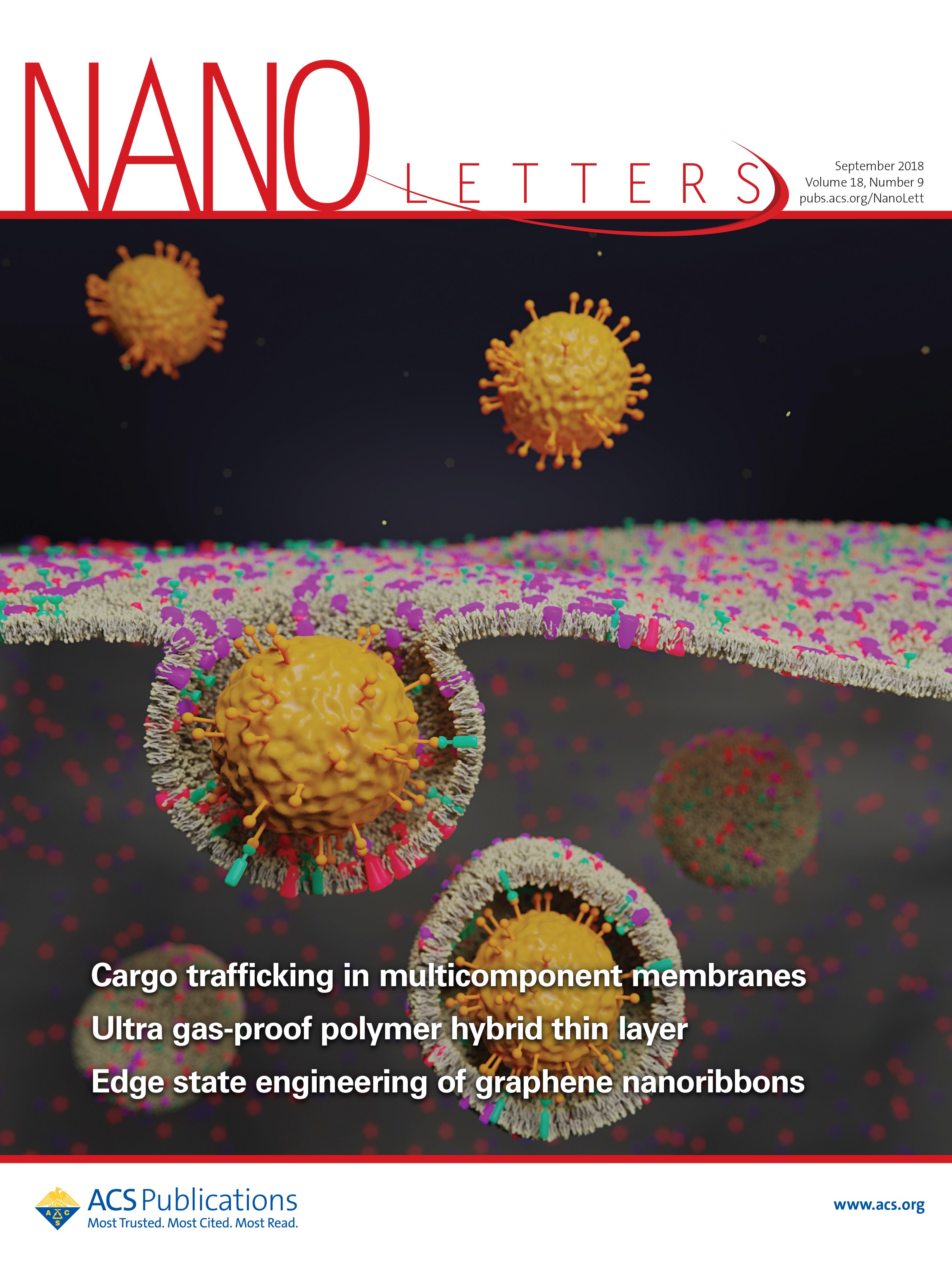
Interactions with multicomponent membranes are difficult to predict due to Here we analytically derived design rules for multicomponent interactions and, supported by Monte Carlo simulations, demonstrated a general route towards targeting multicomponent cell membranes. We also show the effect of intrinsic curvature of receptors, in collaboration with Andjela Saric at UCL. Work on immune response via activation of TLR9 receptors by multivalent DNA--peptide aggregates led to a breakthrough in our understanding of immune system activation by DNA-peptide complexes on the cellular level and points to a physical origin of certain autoimmune diseases like Psoriasis. In collaboration with the experimental group of Gerard Wong at UCLA,
T. Curk, J. Dobnikar, and D. Frenkel
Proc. Natl. Acad. Sci. U.S.A. 114, 7210–7215 (2017)
T. Curk P. Wirnsberger, J. Dobnikar, D. Frenkel, and A. Šarić
Nano Lett. 18, 9 (2018) [front cover]
N. W. Schmidt*, F. Jin*, R. Lande*, T. Curk*, W. Xian, C. Lee, L. Frasca, D. Frenkel, J. Dobnikar, M. Gilliet, and G. C. L. Wong
Nature Materials 14, 696–700 (2015)
Phase behavior of polymer–nanoparticle composites
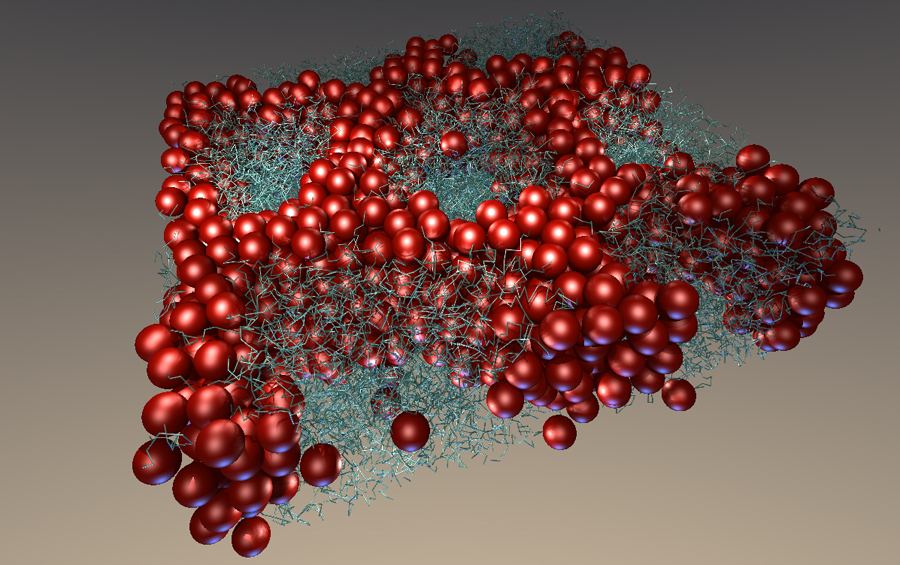
We showed how confining nanoparticles to polymer brushes leads to microphase separation and pattern formation. Patterns can be controlled by external fields, thus opening up new routes for the design of thin structured films.
T. Curk, F. J. Martinez-Veracoechea, D. Frenkel, and J. Dobnikar
Nano Lett. 14, 2617–2622 (2014)
T. Curk, F. J. Martinez-Veracoechea, D. Frenkel, and J. Dobnikar
Soft Matter 9, 5565 (2013)
- Phase separation and ripening in a viscoelastic medium
T. Curk and E. Luijten
Preprint - Discontinuous conformational transition and actuation of pH-responsive hydrogels
J. Yuan and T. Curk
Preprint - Hybrid Nanocrystals of Small Molecules and Chemically Disordered Polymers
E. Bruckner*, T. Curk*, Luka Đorđević, Ziwei Wang, Ruomeng Qiu, Adam Dannenhoffer, Hiroaki Sai, E. Luijten, and S. I. Stupp
Nature Nano. (Under review) - Unraveling crystal growth at the nanoscale
B. Luo, Z. Wang, T. Curk, G. Watson, C. Liu, A. Kim, Z. Ou, E. Luijten, and Q. Chen
Nature (under review) - Accelerated simulation method for charge regulation effects
T. Curk, J. Yuan and E. Luijten
J. Chem. Phys (under review) [preprint]
- Charge-regulation effects in nanoparticle self-assembly
T. Curk and E. Luijten
Phys. Rev. Lett. 126, 38003 (2021) [Editor’s Suggestion] - Computational design of probes to detect bacterial
genomes by multivalent binding
T. Curk, C. A. Brackley, J. D. Farrell, Z. Xing, D. Joshi, S. Direito, U. Bren, S. Angioletti-Uberti, J. Dobnikar, E. Eiser, D. Frenkel, and Rosalind J. Allen
Proc. Nat. Acad. Sci. 117, 8719 (2020) - First-order hyper-selective binding transition of multivalent particles under force
T. Curk, N. Tito
J. Phys. Cond. Mat. 32, 214002 (2020) - Spontaneous domain formation in spherically-confined elastic filaments
T. Curk*, J. D. Farrell*, J. Dobnikar, R. Podgornik
Phys. Rev. Lett. 123, 047801 (2019) - Multivalent Recognition at Fluid Surfaces: The
Interplay of Receptor Clustering and Superselectivity
G. V. Dubacheva*, T. Curk*, D. Frenkel, and R. P. Richter
J. Am. Chem. Soc. 141, 2577 (2019) - Bonding interactions between ligand-decorated colloidal particles
T. Curk, U. Bren, and J. Dobnikar
Mol. Phys. 116, 3392 (2018) -
Controlling cargo trafficking in
multicomponent membranes
T. Curk P. Wirnsberger, J. Dobnikar, D. Frenkel, and A. Šarić
Nano Lett. 18, 9 (2018) [front cover] -
Coarse-grained simulation of DNA using
LAMMPS
O. Henrich, Y. A. Gutiérrez Fosado, T. Curk, and T. E. Ouldridge
Eur. Phys. J. E 41, 57 (2018) [front cover] -
Design principles for super selectivity using multivalent interactions
T. Curk, J. Dobnikar, and D. Frenkel
Multivalency: Concepts, research and applications, edited by Jurriaan Huskens, Leonardo J. Prins, Reiner Haag, and Bart Jan Ravoo, Wiley (2018) -
Crystallinity of Double-Stranded RNA-Antimicrobial Peptide Complexes Modulates Toll-Like Receptor
3-Mediated Inflammation
E. Y. Lee, T. Takahashi, T. Curk, J. Dobnikar, R.L. Gallo, and G. C. L. Wong
ACS Nano 11, 12145–12155 (2017) -
Optimal multivalent targeting of membranes with many distinct
receptors
T. Curk, J. Dobnikar, and D. Frenkel
Proc. Natl. Acad. Sci. U.S.A. 114, 7210–7215 (2017) -
A review of immune amplification via ligand clustering by self- assembled
liquid-crystalline DNA complexes
E. Y. Lee, C. K. Lee, N. W. Schmidt, F. Jin, R. Lande, T. Curk, D. Frenkel, J. Dobnikar M. Gilliet, and G. C. L. Wong
Adv. Colloid Interface Sci. 232, 17–24 (2016) -
The Effect of Attractive Interactions and Macromolecular
Crowding on Crystallins Association
J. Wei, J. Dobnikar, T. Curk, and F. Song
PloS one 11, e0151159 (2016) -
Rational design of molecularly imprinted polymers
T. Curk, J. Dobnikar, and D. Frenkel
Soft Matter 12 35 (2016) [front cover] -
Liquid-crystalline ordering of antimicrobial peptide-DNA complexes controls
TLR9 activation
N. W. Schmidt*, F. Jin*, R. Lande*, T. Curk*, W. Xian, C. Lee, L. Frasca, D. Frenkel, J. Dobnikar, M. Gilliet, and G. C. L. Wong
Nature Materials 14, 696–700 (2015) -
Designing multivalent probes for
tunable superselective targeting
G. V. Dubacheva, T. Curk, R. Auzly-Velty, D. Frenkel, and R. P. Richter
Proc. Natl. Acad. Sci. U.S.A. 112, 5579–5584 (2015) -
Nanoparticle organization in sandwiched
polymer brushes
T. Curk, F. J. Martinez-Veracoechea, D. Frenkel, and J. Dobnikar
Nano Lett. 14, 2617–2622 (2014) -
Superselective targeting using multivalent polymers
G. V. Dubacheva, T. Curk, B. M. Mognetti, R. Auzly-Velty, D. Frenkel, and R. P. Richter
J. Am. Chem. Soc. 136, 1722–1725 (2014) -
A new configurational bias
scheme for sampling supramolecular structures
R. De Gernier, T. Curk, G. V. Dubacheva, R. P. Richter, and B. M. Mognetti
J. Chem. Phys. 141, 244909 (2014) -
Collective ordering of colloids in grafted
polymer layers
T. Curk, F. J. Martinez-Veracoechea, D. Frenkel, and J. Dobnikar
Soft Matter 9, 5565 (2013) -
Chemotactic Sensing towards ambient and secreted attractant
Drives Collective Behaviour of E. coli
T. Curk, D Marenduzzo, and J. Dobnikar
PloS one 8, 74878 (2013) -
Layering, freezing, and re-entrant melting of hard spheres in soft confinement
T. Curk, A. de Hoogh, F. J. Martinez-Veracoechea, E. Eiser, D. Frenkel, J. Dobnikar, and M. E. Leunissen
Phys. Rev. E 85 (2012) -
Coarse Graining Escherichia coli Chemotaxis: From
Multi-Flagella Propulsion to Logarithmic Sensing
T. Curk, F. Matthus, Y. Brill-Karniely, and J. Dobnikar
Advances in Systems Biology, 381 (2012) - On the origin and characteristics of noise-induced
Levy walks of E. coli
F. Matthus, M. S. Mommer, T. Curk, and J. Dobnikar
PloS one 6, 18623 (2011)
- Modeling multivalent interactions (Ph.D thesis)
University of Cambridge, UK (2016) [electronic version]